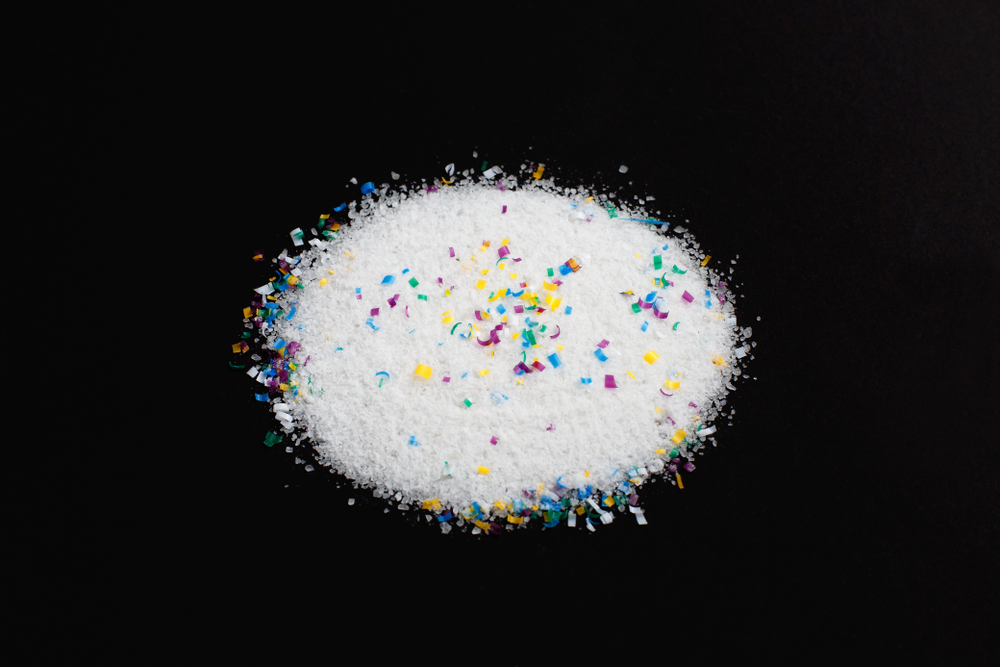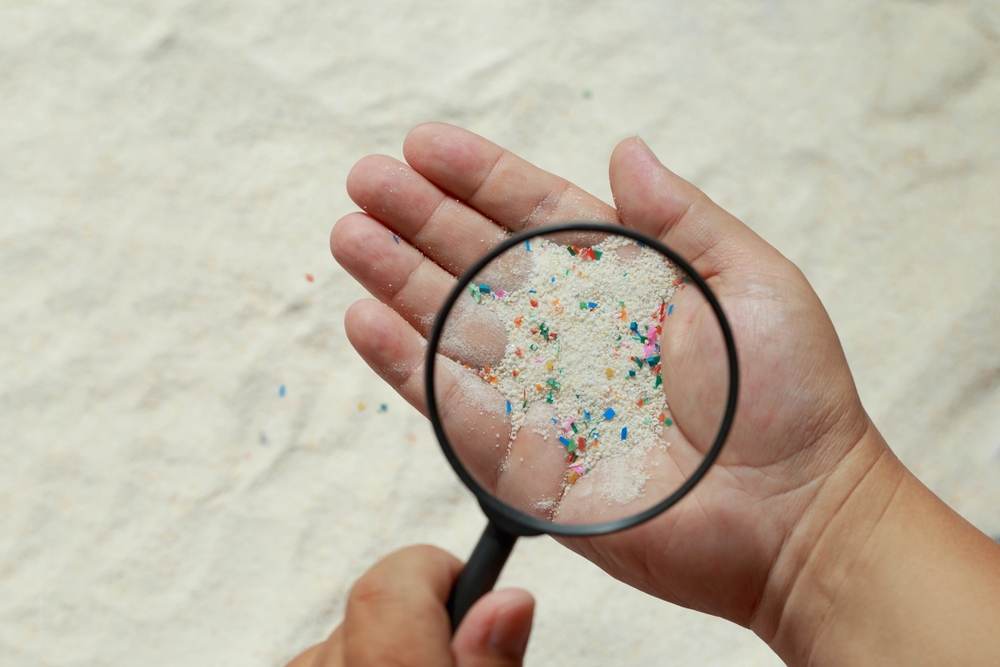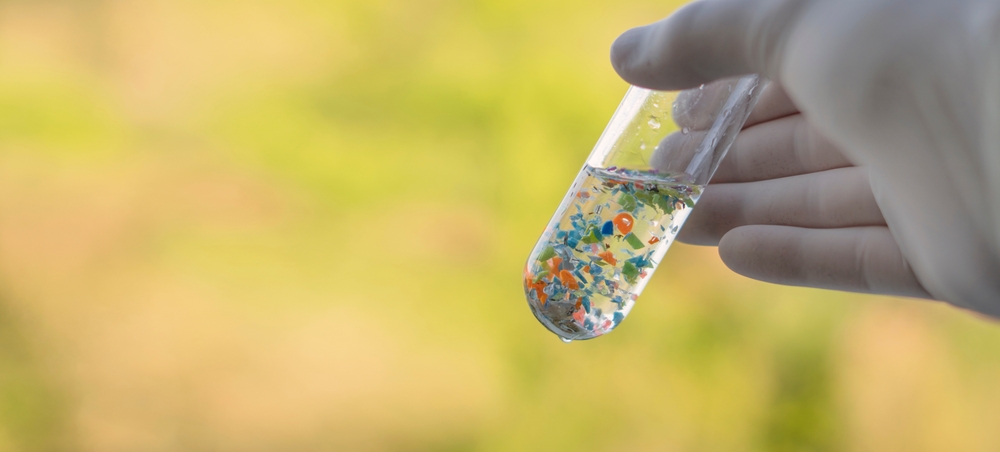Teens make device that filters 94% of microplastic using ultrasound

It’s easy to believe that the world’s biggest problems—climate change, pollution, the slow poisoning of our planet—are too big for any one person to solve. It’s even easier to believe that the solutions are locked away in the hands of experts, governments, or corporations. But every now and then, a story comes along that flips that narrative on its head. A story that reminds us that innovation doesn’t always wear a lab coat, and impact doesn’t wait for permission.
This is the story of two teenagers who looked at a crisis affecting every corner of the Earth—microplastic New Study Shows a Single Scratch on a Nonstick Pan Releases 9000 Toxic Microplastic Particles, While a Broken Coating Releases Over 2 Million pollution—and decided to do something about it. Armed with curiosity, determination, and a willingness to experiment, they built a device no bigger than a pen that filters out microplastics from water using nothing but sound. And they didn’t stop at an idea—they turned it into a working prototype that captured the attention of scientists, engineers, and global competitions alike.
Seventeen-year-olds Victoria Ou and Justin Huang from College Park High School in Texas developed a groundbreaking filtration system that uses ultrasonic waves to remove microplastics from water. Their device achieved a removal rate of 84% to 94% in lab tests, offering a… pic.twitter.com/Bh5QsPq3Gx
— Interesting Engineering (@IntEngineering) June 2, 2025
Innovation from the Unlikeliest Place – The Power of Youth
Sometimes, the solutions to humanity’s most pressing challenges don’t come from multimillion-dollar labs or government-funded institutions—they emerge from the determination and imagination of young minds. That’s exactly the case with Justin Huang and Victoria Ou, two high school students from Woodlands, Texas, who have developed a device no bigger than a pen that uses ultrasound technology to remove up to 94% of microplastic particles from water. Microplastics—tiny plastic fragments less than 5mm in size—are everywhere: in oceans, rivers, mountaintops, the air we breathe, and even inside the human body. Tackling their spread has remained one of the most daunting environmental challenges of our time, but this duo has managed to engineer a promising solution right from their own home.
Their invention uses high-frequency sound waves to generate an acoustic force that subtly redirects microplastic particles away from the water’s outflow point, effectively trapping them while allowing clean water to pass through. In lab testing, this method removed between 84% and 94% of microplastics in just a single pass—an impressive leap forward compared to previous ultrasonic approaches. While ultrasonic filtration isn’t a new concept, Huang and Ou’s design stands out for its size, simplicity, and improved performance. It’s an elegant demonstration of how science doesn’t always need to be complex to be effective—it just needs to be thoughtful, well-executed, and grounded in purpose.
Their project earned them the prestigious Gordon E. Moore Award for Positive Outcomes for Future Generations at the Regeneron International Science and Engineering Fair, along with $50,000 to continue developing their invention. With more professional equipment and access to lab resources, they hope to scale their device for broader applications. But beyond the awards and technical success, their story reminds us of something deeper: innovation doesn’t have an age limit, and solutions to global problems might already be in the hands of those bold enough to ask, “Why not us?”

The Invisible Threat – Why Microplastics Matter More Than We Think
Microplastics are more than just tiny fragments floating in our oceans—they are a silent, persistent invader infiltrating every corner of our planet and our bodies. Formed from the breakdown of larger plastic items or manufactured intentionally for use in products like cosmetics and industrial abrasives, microplastics are now so widespread they’ve been detected in the air we breathe, the food we eat, and even human blood and organs. Studies have found microplastic particles in placentas, lungs, and breast milk, raising urgent questions about their long-term health effects. While the science is still evolving, early research suggests potential links to inflammation, oxidative stress, and other cellular damage in both animals and humans, underscoring a growing concern within the global scientific community.
These particles are not just a health issue—they’re a planetary one. Carried by wind, rain, and waterways, microplastics have been discovered at the summit of Mount Everest and the depths of the Mariana Trench, proving that no ecosystem is immune. Their small size allows them to be easily ingested by marine life, often working their way up the food chain and accumulating in organisms—including us. According to the World Wildlife Fund, the average person may be consuming up to 5 grams of plastic a week, roughly the equivalent of a credit card. While regulations on plastic use and waste are beginning to take shape in some parts of the world, the reality is that existing plastic pollution will persist for centuries, continuously breaking down into smaller and more pervasive pieces.
This is what makes the efforts of young innovators like Huang and Ou not just admirable but necessary. It’s not just about removing plastic from water—it’s about recognizing and responding to an environmental crisis that is both immediate and enduring. Their work sheds light on the scale of the problem, while offering a tangible, hopeful step forward. Because when it comes to microplastics, ignorance is no longer an option—and inaction is a luxury we can’t afford.

Why Traditional Solutions Fall Short – And What Makes This Different
Confronting the microplastic crisis isn’t new territory. For years, scientists, engineers, and policymakers have been searching for ways to filter or eliminate these particles from our environment, especially from water systems where they accumulate and spread. Traditional filtration systems—such as membrane filters, sand beds, and chemical treatments—can be partially effective, but they often struggle with scalability, cost, and unintended consequences like generating secondary waste or consuming excessive energy. Some systems clog easily, require constant maintenance, or fail to capture the smallest particles, which often slip through undetected but are still harmful. Moreover, implementing such systems at the municipal or industrial scale remains a massive challenge, particularly in regions lacking infrastructure or funding. Many promising ideas exist in academic papers or expensive prototypes but rarely make it into the real world.
This is where Huang and Ou’s approach offers something refreshingly different: it’s simple, compact, and efficient. By using ultrasound—a form of acoustic energy that travels freely through water—their device creates a kind of invisible barrier, pushing microplastics away from the water’s exit point without relying on any physical filter medium. This means less wear and tear, fewer chances of clogging, and reduced need for ongoing maintenance. It also means the system can, in theory, be integrated into existing water systems without major overhauls. And because the prototype is already effective at such a small scale, it opens the door for creative applications—from portable personal use devices to retrofitted components in industrial water treatment plants. In an era where we often assume that bigger problems demand bigger, costlier solutions, this invention flips that narrative and proves that powerful impact can come in an unassuming package.
The brilliance of their invention lies not only in its technical merit but also in its accessibility. These teens built and tested their prototype outside a traditional lab setting, using available resources and a lot of ingenuity. That accessibility hints at its potential for wide adoption, especially in communities where expensive infrastructure upgrades are out of reach. While the path to mass production will involve rigorous testing, regulatory approvals, and likely significant engineering refinement, the core concept has already proven its worth. It’s this blend of practicality and innovation that positions their work as more than just a science fair project—it’s a possible blueprint for decentralized, scalable microplastic reduction in the very near future.

The Role of Education, Curiosity, and Support in Fueling Innovation
What stands out just as much as the technology itself is the environment that allowed it to come to life—an environment powered by curiosity, a drive to solve real problems, and access to platforms that recognize and uplift young minds. Huang and Ou’s breakthrough wasn’t born in a corporate research center; it emerged from after-school experiments, long nights of problem-solving, and a deep desire to make a difference. That speaks volumes about the power of education when it nurtures exploration over rote memorization, and creativity over conformity. When students are encouraged to ask “why,” “what if,” and “how can we fix this,” they stop seeing the world’s problems as overwhelming and start seeing them as solvable puzzles waiting for their input.
Competitions like the Regeneron International Science and Engineering Fair (ISEF) play a crucial role in this ecosystem. They don’t just award money; they offer visibility, mentorship, and most importantly, validation—that young people’s ideas matter. The fact that Huang and Ou not only participated but won the Gordon E. Moore Award for Positive Outcomes for Future Generations reflects the growing recognition that solutions to global challenges can and should come from unexpected places. This support also gives young inventors access to tools, labs, and expertise that can turn a prototype into a product—bridging the often difficult gap between invention and implementation. Without these opportunities, many brilliant ideas would remain locked in notebooks or bedroom labs, never tested or scaled.
This story also underscores a bigger truth: innovation thrives where passion meets purpose and where communities and institutions are willing to invest in potential, not just credentials. These students weren’t content to learn about microplastics from a textbook—they set out to confront the problem head-on. And they did so not because someone told them to, but because they cared. That spark of purpose—combined with the right support and recognition—can unlock extraordinary contributions to science, society, and the planet. If we want more young people solving real problems, we need to build more spaces where imagination is welcomed, risks are celebrated, and solutions are taken seriously, regardless of who delivers them.
A Call to Action – Small Minds Can Spark Big Change
What Huang and Ou have achieved isn’t just a technological milestone—it’s a wake-up call. It reminds us that no one is too young, too inexperienced, or too small to make a meaningful impact. In a world overwhelmed by headlines about environmental collapse, social division, and systemic inaction, it’s easy to slip into cynicism. But here’s the truth: change doesn’t begin with perfect conditions or fully formed plans—it begins with a question, a sense of responsibility, and the courage to act. These teens didn’t wait for permission or a job title; they saw a problem and stepped into the solution. That mindset is what the world desperately needs more of.
We are all surrounded by problems, but we are also surrounded by possibility. Whether you’re a student, teacher, policymaker, engineer, or just someone who cares, the challenge is the same: how will you use your voice, your skills, and your space to be part of the solution? Maybe it’s supporting young innovators through mentorship, funding, or simply sharing their work. Maybe it’s rethinking your own relationship with plastic, advocating for stronger environmental policies, or pushing your community to adopt better waste management. Change doesn’t require you to do everything—but it does ask that you do something.
The story of this invention doesn’t end with two teens and an award—it begins there. It’s an invitation to believe that creative, committed individuals, no matter their age or background, can bend the trajectory of our future. The real question isn’t whether they can do it again. It’s whether we will meet them in that effort—by listening, supporting, and believing that the solutions we’re looking for might already be right in front of us, waiting for a chance to be seen.
Loading...

